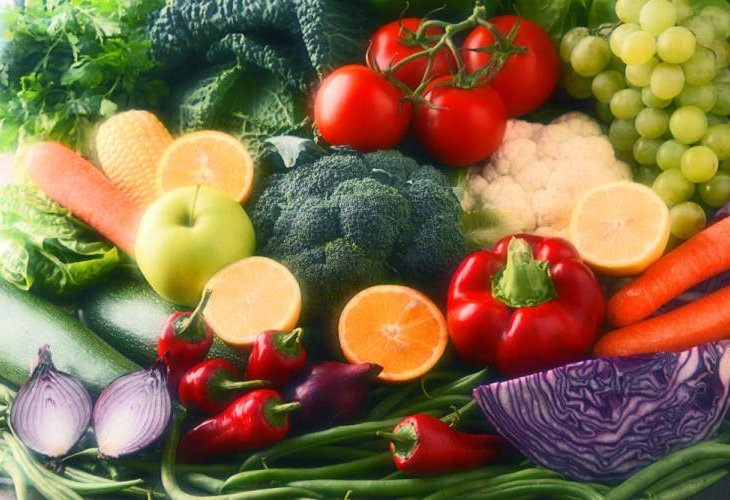Health and Mind
How to Eat Vegetables for Maximum Health and Healing
Learn how proper chewing and cooking can bring out the full healing power of vegetables and help you live healthier each day
 (Photo: shutterstock)
(Photo: shutterstock)Vegetables are one of the foundations of healthy living and natural healing. From young children to the elderly, they’re a vital part of our daily diet. Yet, in much of the Western world, vegetables are still not eaten as often as they should be. And when they are included, the quantity is usually far too small. Part of the issue may come from a misunderstanding of what vegetables really are.
Interestingly, the word “vegetables” comes from the root meaning “green.” That gives us a hint: the best vegetables are green.
Many people think that a salad made of cucumbers, tomatoes, and peppers is a true vegetable salad. But according to botany, anything that has seeds is actually a fruit. So while those foods are refreshing and tasty, they’re technically non-sweet fruits, not vegetables.
Unlike fruit trees that grow year after year, most vegetable plants only grow for one season and then wither away. Vegetables generally have very low sugar content unlike fruits, which are often sweet, except for a few exceptions like carrots, beets, and peas. Fruits also tend to have little or no protein or fat. Vegetables, on the other hand, are rich in important nutrients: minerals, vitamins, plant chemicals (called phytochemicals), natural enzymes, carotenoids, antioxidants, dietary fiber, and more.
One key nutrient found in vegetables is cellulose, a type of complex carbohydrate that human bodies can’t fully digest. That’s why it’s so important to chew vegetables well. Proper chewing helps prevent digestive issues, such as bloating, gas, or poor absorption of nutrients.
Most vegetables create an alkaline reaction in the body, which helps balance acidity and supports better overall health. There are a few exceptions, such as spinach, artichokes, asparagus, Brussels sprouts, and horseradish, which are more acidic. Fermented vegetables—like pickles made with natural, beneficial bacteria also cause an acidic reaction, similar to milk products.
Some vegetables are best eaten raw, like leafy greens, cucumbers, or even watermelon. Others, like potatoes, can’t be eaten raw at all. Cooked vegetables are a regular part of most people’s diets. But cooking them at high temperatures can destroy 30% to 40% of their vitamins in just a few minutes. That’s why it’s best to cook vegetables by steaming them or using quick stir-fry methods, as seen in many Far Eastern cuisines. Ideally, vegetables should be eaten every day, especially green leafy ones, and whenever possible, in their natural and raw state.
Why Vegetables Matter So Much
Eating a diet rich in vegetables can protect the body from many challenges, including exposure to radiation. Vegetables contain compounds like carotenoids (in orange, yellow, and red vegetables), vitamin E, vitamin C (also called ascorbic acid), omega-3 fatty acids, flavonoids, and more, all of which play a role in guarding the body.
Eating plenty of vegetables and fruits can reduce the risk of endometriosis by as much as 70%.
Vegetables rich in vitamin E can help lower the risk of bladder and prostate cancers.
For growing children, especially girls, consuming at least three servings of vegetables and fruits each day supports strong bone development. Girls who follow this habit have on average 6% more bone surface area and an 8.3% greater bone radius than others. A key nutrient here is vitamin K, which is found in abundance in leafy greens and is crucial for bone health.
Vitamin E is also found in sunflower seeds, almonds, spinach, and peppers.
Vitamin K2, another form found in green vegetables, helps reduce the risk of liver cancer and cirrhosis.
Vegetables are also packed with dietary fiber. Eating just 10 grams of fiber per day is linked to a 14% lower risk of heart disease and a 27% drop in mortality from heart-related conditions.
A vegetable-rich diet can also help reduce cholesterol levels, lower the risk of polyarthritis, and protect corneal cells in the eyes from UV radiation, offering ten times more protection than even vitamin E.
When it comes to stomach cancer, research shows that eating vegetables especially green leafy and yellow vegetables and fruits high in vitamin C and E can significantly lower the risk.
Cruciferous vegetables (like broccoli, cabbage, and Brussels sprouts) contain a powerful compound called AITC, which is released when they’re chopped, chewed, or cooked. AITC is known to help destroy colon cancer cells and stop the disease from spreading. You can also find AITC in horseradish and mustard.
Leafy greens are also rich in magnesium, a mineral that helps older adults with memory and learning. It can also relieve muscle cramps, like those that occur during pregnancy or menstruation.
And lastly, green vegetables contain folic acid, which reduces the risk of stroke and helps lower the chances of developing colon adenomas, a type of polyp that can turn cancerous.
As the Rambam (Maimonides), one of the greatest Jewish sages and physicians, taught: “Man’s health is in his own hands.” Including vegetables in your daily meals isn’t just a diet choice, it’s a Torah-guided way to care for the precious body and soul Hashem gave you.
Adapted from the writings of R.L. Orfelts

